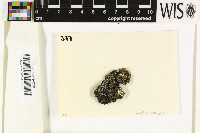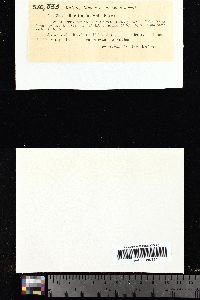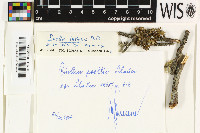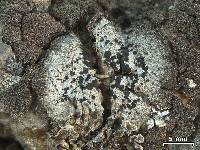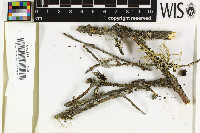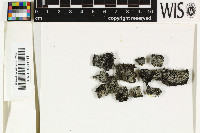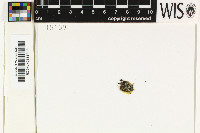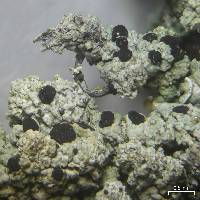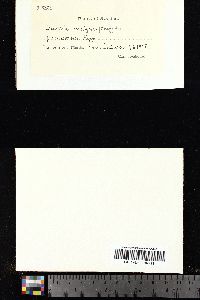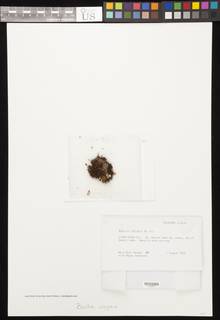
- Home
- Search
- Images
- Species Checklists
- US States: O-Z >
- US National Parks
- Central America
- South America
- US National Parks
- Southern Subpolar Region
|
|
|
|
Family: Caliciaceae
[Buellia disciformis var. insignis (Nägeli) Flagey, moreBuellia insignis (Nageli ex Hepp) Th. Fr., Buellia insignis f. insignis (Nägeli ex Hepp) Th. Fr., Buellia insignis var. insignis (Nägeli ex Hepp) Th. Fr., Buellia parasema var. insignis (Nägeli) Hazsl., Lecidea insignis Nägeli ex Hepp, Lecidea insignis var. insignis Nägeli ex Hepp, Lecidea insignis var. muscorum Hepp] |
Thallus whitish, grey, cream to ochraceous, usually thick and warted, rarely smooth, continuous and well developed, not delimited by a blackish prothallus. Apothecia (0·5–)0·7–1(–1·3) mm diam., abundant and confluent, subimmersed to adnate, rarely becoming sessile. Disc initially plane to convex, epruinose. Proper margin initially thick, rapidly becoming thinner and finally excluded. Excipulum well developed, 70–100 µm wide, K+yellow (microscope slide). Hymenium without oil droplets, 100–130 µm high. Hypothecium with oil droplets. Apical cells of the paraphyses strongly swollen, 4–6(–7) µm wide, brown pigmented. Ascospores (19–)21–25(–29) X (8–)9–11(–12) µm, resembling the Callispora-type when young, Buellia-type when mature, apices pointed, often curved, roughly ornamented. Spermatia not seen. Chemistry. Thallus UV+orange, K+yellowish, KC+orange; thallus section C+orange. Atranorin (traces), 6-O-methylarthothelin (major),+/- arthothelin (traces) and +/-gyrophoric acid (traces), by TLC and HPLC. The clarity of the spot tests are dependent upon the concentration of 6-O-methylarthothelin (similar variation was also observed with B. chloroleuca). This is the first report of 6-O-methylarthothelin, arthothelin and gyrophoric acid in B. insignis. The chemistry of B. insignis is close to that of several species of Pertusaria, subgenus Pionospora, for example, P. bryontha and P. dispar (Archer 1993), which also contain a combination of a chlorinated xanthone and an orcinol tridepside (6-O-methylarthothelin and gyrophoric acid, respectively) as major compounds. Discussion. Buellia insignis is well characterized by its chemistry, the lack of hymenial oil droplets and the large Buellia-type ascospores, which show Callispora-type tendencies when young. The description given in Sheard (1964) and Orange et al. (1992) is, at least in part, based on one specimen that, in our opinion, does not correspond to B.insignis. This specimen (VÄ•zda: Lich. sel. exs. 621, BM) is readily distinguished from B. insignis by possessing a thallus composed of subhemisphaerical areolae, smaller apothecia with pruinose discs and hymenial oil droplets. Imshaug (1951) considered that B. papillata (Sommerf.) Tuck. was the correct name for B. insignis but according to Sheard (1964), Schauer (1965), Wirth (1988) and Galloway et. al. (1998), these taxa are not conspecific. This problem can be solved only by studying the type specimen of B. papillata. Ecology and distribution. Buellia insignis is an arctic-alpine species that occurs on mosses, plant debris and more rarely on coniferous bark. It has not been reported from the Iberian Peninsula. For its European distribution see Orange et al. (1992) and Nimis (1993).
|



